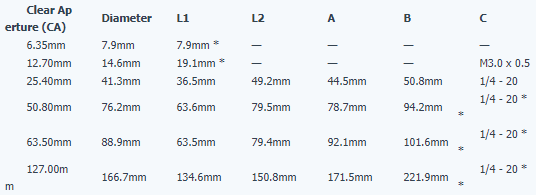
Apertures from 6.35mm to 127mm
Beam Deviation (Parallelism) from 30 to 1 Arc Sec.
Visible and IR Coatings
No Polarization Rotation of Reflected Beam
Shock Resistant, Stress Free Mounting for Stability
These retroreflectors are constructed of three first surface mirrors assembled into a corner cube. This produces a lightweight “hollow corner cube” that is totally insensitive to position and movement. The result is that parallel incident light will be reflected with great accuracy back to the light source, regardless of the angle of incidence. Since the optical path is in air, this configuration eliminates material absorption and chromatic aberrations present in solid glass prism-type retroreflectors. The mirrors are mutually orthogonal with perpendicularities correct within a fraction of a second of arc. The beam deviation value is the maximum deviation from parallelism of any single return beam from any of the 6 sub-apertures of the retroreflector, when the retoreflector is fully illuminated. Exiting wavefront is the resultant peak-to-valley wavefront deformation from a fully illuminated retroreflector, which is listed in factors of lambda (where lambda=633nm). The unique, patented cushion mounting makes them extremely resistant to shock. The larger housings are designed with a variety of holes on the back mounting plate.
